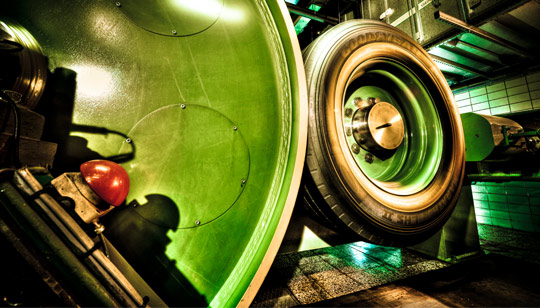|
HOW TIRES ARE PRODUCEDHow tires are produced There are many components that will enter the production process of Goodyear tires, and they play an important role in ensuring that your vehicle achieves * performance and maintains your safety Coponents of tires Bead The tire bead is made of high-strength steel wire covered with rubber, making the tire and rim tightly attached to the synthetic wheel. Banded layer The steel wire belt is wrapped around the tire to enhance strength and provide stability, and is made of steel wire fabric covered with rubber. Sometimes aramid cords are added to increase additional strength, puncture resistance, and durability. Cord layer The cord layer is the skeleton of a tire composed of fibers, usually made of woven fibers covered with rubber. This will make your tires more flexible. The ply, also known as the carcass ply, is directly placed on the inner lining of the tire, providing the strength of the tire. Sidewall This is the area where the thicker rubber parts extend from the tire bead to the tread and provide lateral stability for the tire. Here you will find all the information about tire manufacturing. Knife groove pattern and groove The tread pattern blocks are separated by deep grooves, which will allow your tires to drain water, snow, and mud. Knife groove pattern is a small groove engraved on the tread pattern block, which provides additional grip, which is particularly important on tires made for ice and snow road conditions. Fetal shoulder The slightly tilted edge of the joint between the tread and sidewall on your tire. Its pattern and structure play an important role in your steering control. Tread This is the part of your tire where the rubber comes into contact with the road. The tread provides both cushioning and grip, and its pattern and formula determine most of the most important performance characteristics of your tire. The manufacturing process of tires Mixing Your tire's rubber is mixed with up to 30 different raw materials, and the proportion of raw materials depends on the performance target of the tire. It is composed of various types of rubber, fillers, and other raw materials, which are mixed together in a giant mixer called a Bambury mixer to produce a black, sticky rubber material that will be used for rolling. Rolling After the mixed rubber cools down, it is sent to a special mixer where the rubber is cut into strips that will form the basic structure of the tire. At this stage, other components of the tire also need to be prepared, some of which need to be covered with another type of rubber. forming Compose the tire itself from the inside out. Fiber woven objects, steel belt bundles, tire beads, cord layers, tread, and other components are placed in a tire forming machine, ensuring that each component is in its precise position. The output that looks somewhat similar to the final product is called a birth fetus. vulcanization The raw tire is placed in a heated mold for pressure curing to achieve vulcanization. All tire components are pressed together and given the final shape of the tire, including its tread pattern and the manufacturer's sidewall markings. |

